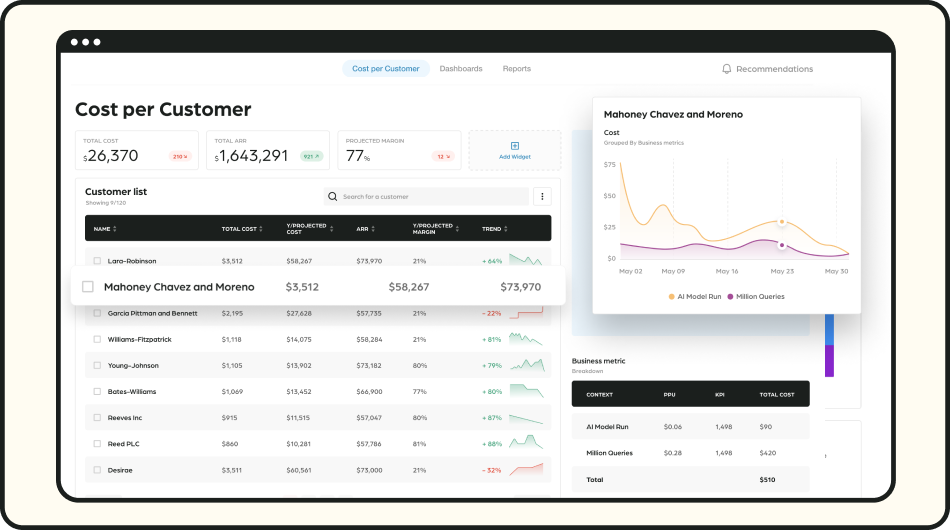
In today’s increasingly digital, service-oriented economy, businesses always look for better ways to scale their operations. The agility and flexibility of multi-cloud environments make that possible by ensuring that companies are better equipped to respond to fluctuations in demand. However, this also means that managing cloud costs is a significant challenge, to the point that expenses can add up rapidly and with little or no warning.
FinOps is a direct response to the need for better cloud cost control and optimization. FinOps has become a key discipline comprising a set of concepts that bring financial accountability to the on-demanding spending model of cloud computing. It is, in essence, a cultural change that focuses on tying unit economics back to business value. To that end, expanding cloud cost management into the broader FinOps perspective can help answer several vital questions.
1. Why have my cloud bills increased?
Variable cost models are one of the main benefits of cloud computing, but they can also end up being its biggest challenges. Cloud bills have a habit of increasing unexpectedly, and these increases don’t always match up with periods of increased demand and revenue. Moreover, your cloud bills themselves only reveal your total spend, broken down by each service that the vendor offers. These are the unit of economics that matter to the vendor, and not to you. As such, they fail to comprehensively answer why your cloud bills have increased.
A core tenet of the FinOps movement is taking advantage of the variable cost model of cloud computing while mitigating the risk of bill shock. A FinOps implementation spans three primary steps — inform, optimise, and operate. With the continuous collection of operational data of key assets like virtual machines, data lakes, and data warehouses, you can equip yourself with the insights needed to make informed decisions. By drawing on a collection of both historical and near-real-time operational data, FinOps ultimately gives you the chance to embrace just-in-time forecasting, planning, and purchasing of computing capacity.
2. Which workloads should we migrate and where?
Not knowing where to begin paralyzes innovation. Common challenges include determining which workloads to move to the cloud in the first place and which ones to migrate from one vendor to another. While today’s businesses typically run most of their apps in the cloud, certain workloads might be better suited to remaining in-house. There are many possible reasons for this, such as security and regulatory demands, specialized computing requirements, and of course, cost concerns. While cost-effectiveness is one of the most oft-cited benefits of cloud computing, a lack of an informed strategy can result in a substantially higher TCO than expected.
Another principle of FinOps is that reports should be accessible and timely — to drive informed, just-in-time decision-making. Enhanced visibility drives more efficient utilization, and faster feedback loops help satisfy the dynamic demands of cloud cost optimization. In other words, FinOps reveals to teams which workloads to migrate, when, and where, to ensure optimal cost and performance.
 3. How much does each client cost?
3. How much does each client cost?
In some industries, it’s relatively easy to answer the question of how much each client costs to keep. For example, costs that are tied to physical assets, such as real estate, typically come with capital expenses and fairly predictable operational costs. However, it’s a very different matter when calculating the cost of your cloud estate. SaaS vendors face challenges when answering the question of how much each of their clients costs, simply because there are often so many components involved. These might include S3 storage buckets, virtual machines, containers, and even individual app’s features and the transactions they facilitate. To add to the challenge, components may be shared between clients.
Implementing a FinOps culture helps you understand exactly how much each client or other end user costs to maintain. Of course, this is relevant for scenarios beyond SaaS products as well, since the same methodology can be applied to internal teams and individual users and how they consume cloud resources during their day-to-day roles. However, for any SaaS company, FinOps is the holy grail of more effective cost management, since the granular view into how much each client costs helps you price your services more appropriately, avoid overallocation, and make various other optimizations.
4. How can we accurately forecast our requirements?
Facilitating sustainable and long-term business growth depends heavily on how finance and operations teams build models to forecast their cloud spend and allocate budgets to different business units. However, given that around a third of companies go over their cloud budgets by as much as 40%, it’s clear that there’s plenty of room for improvement. Accurate forecasting is vital for mitigating this risk, and that starts with clearly describing objectives with key results and applying one or more key performance indicators. At the highest maturity level, FinOps allows for just a 12% variance between forecasted and actual costs.
To accurately forecast cloud spend and optimize proactively, it’s important to bridge the gap between teams like engineering, finance, and procurement. In most businesses, the finance team is responsible for financial forecasting and procurement for accounting, while both teams rely on engineers to implement solutions that meet their requirements and expectations. In a FinOps environment, however, everyone takes ownership of their cloud usage. Decision-making is both decentralized and yet still driven by a centralized team to ensure a consistent approach throughout the organization. For example, engineers and operations teams no longer need to worry about negotiating rates and contracts. Instead, finance teams take responsibility for that, while engineers can stay focused on usage optimization.
Conclusion
Adopting a FinOps culture in your business might seem overwhelming at first, but it’s important to approach it as a journey of continuous improvement rather than a specific endpoint. It’s best to break down the challenges into addressable areas, starting with the tagging of workloads to tell them apart from one another. The next steps are to define the roles and responsibilities of each team and establish the lines of communication between them.
Finout provides total visibility into your cloud costs to reveal opportunities for optimization and drive informed decision-making among engineers and finance leaders alike. Get in touch with us today to try two months free to run your proof of concept.










